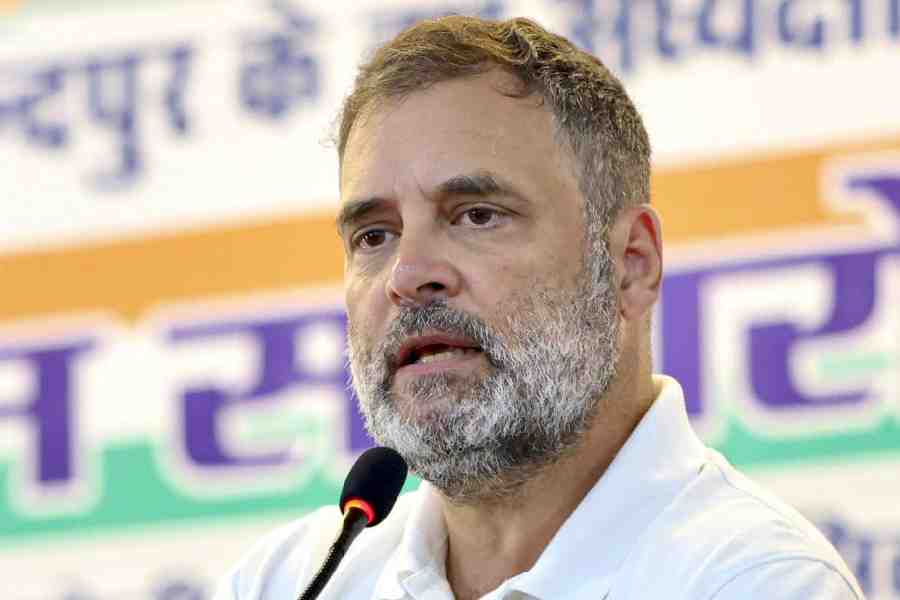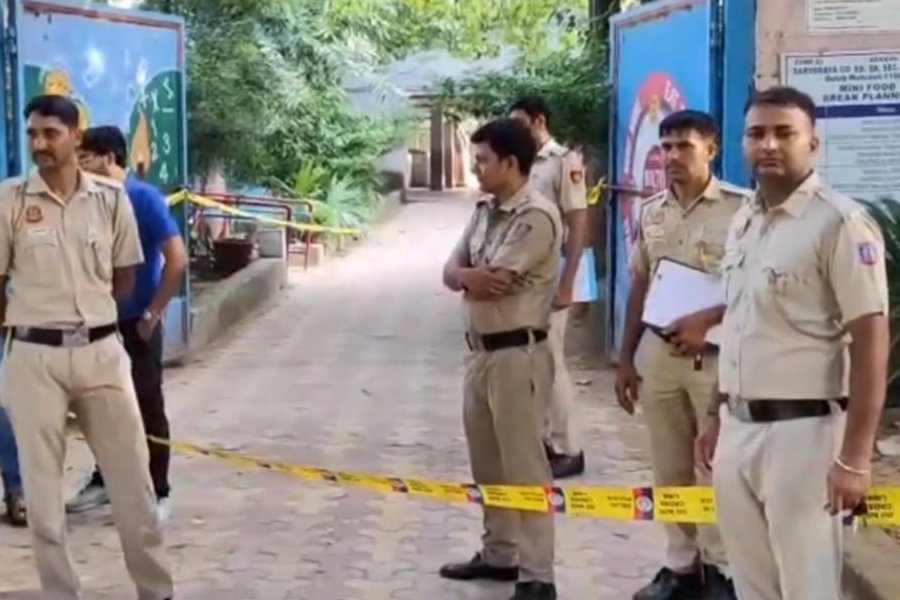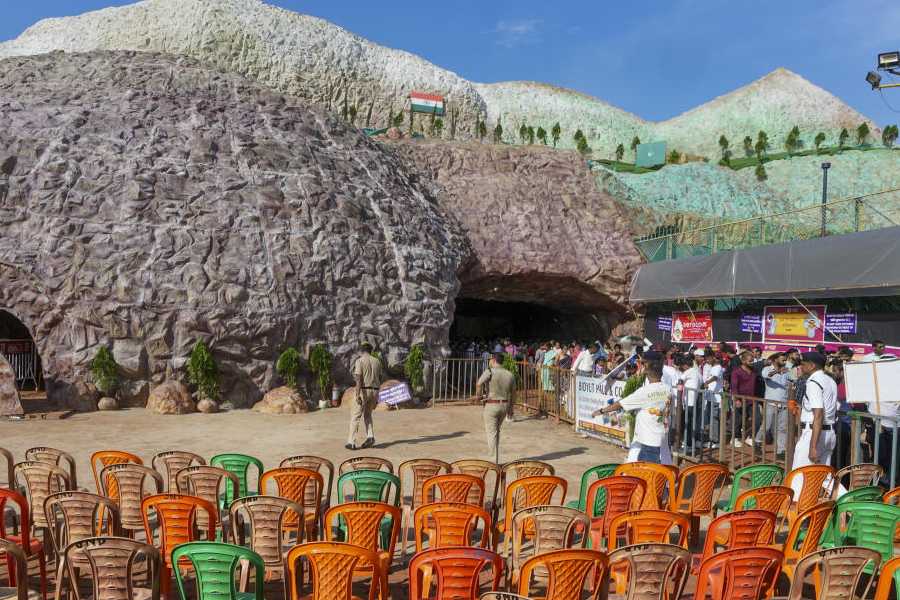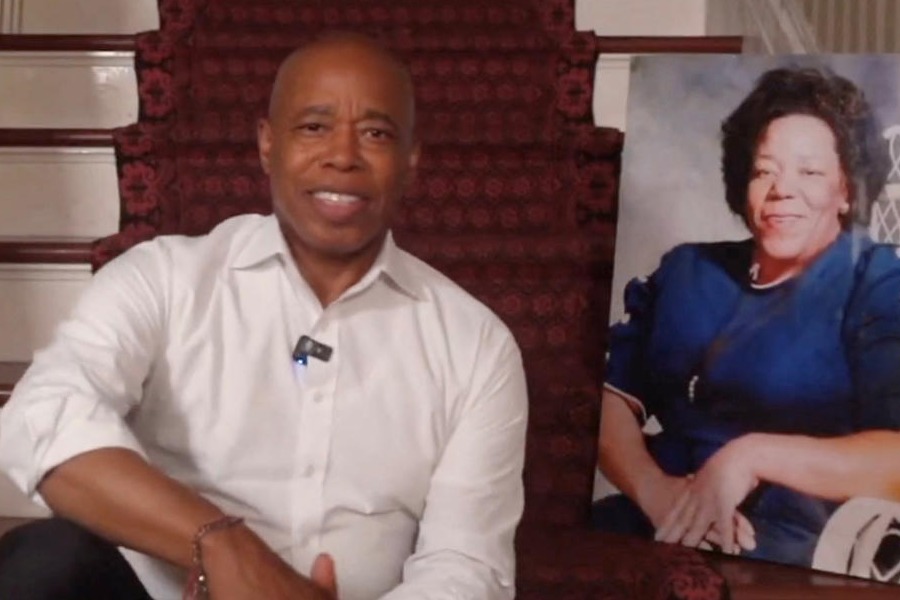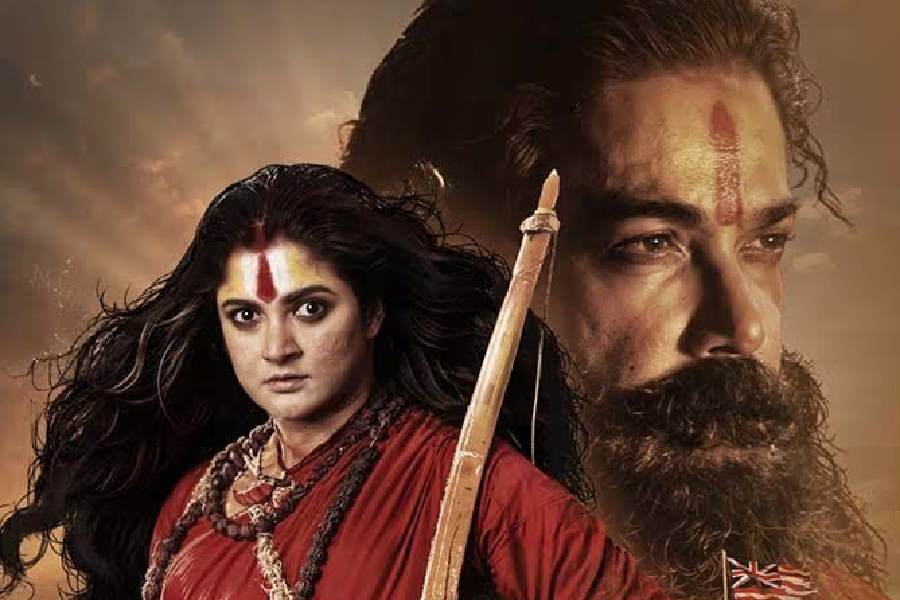 |
It’s the hardy Sardar gene, no doubt. There’s Fauja Singh, running a full marathon at the age of 100. Then there’s his fan, raising a metaphorical toast to the long distance runner. “Fauja Singh is my hero,” says Khushwant Singh, 96, a glass of Scotch by his side.
He doesn’t mean to run the marathon. He is not talking about living till 100 either, though a fortune teller had a peep at his palm and declared that he’d live till 102.
The gene — to jog on till the end — runs in his family too. His father Sobha Singh — the builder of New Delhi — died at 90, his mother at 94. When she was on her deathbed, a niece asked her if she needed anything. “Whisky,” she whispered.
The nonagenarian son recounts her last word — lowering his voice suitably to mimic his mother’s frail tone — at his Sujan Singh Park flat in central Delhi. He sits in one corner of a brightly lit sitting room, in a cardigan and a shawl, his feet up on a stool. Journalists and neighbours occupy various spots. Singh is not ready for an interview, but is chatty. There is laughter all around, the clinking of ice against glass, and the warm memories of a life well spent.
Earlier this month, India’s best known Sikh — and even the good doctor in South Block wouldn’t disagree with that — created a flutter when he said he would discontinue his two syndicated weekly columns — This Above All, which appeared in The Telegraph, and With Malice Towards One And All, published, among others, by The Hindustan Times (HT).
“His column was an institution; an extraordinary combination of erudition and light prose and humour,” says publisher David Davidar. “It will be a great loss to his readers.”
Indeed, cartoonist Mario Miranda’s image of the turbaned man in the bulb — books behind him, a bottle by his side, and girlie magazines spread out in front — is an enduring one. And Khushwant Singh — writer of 100-odd books, editor over the years of The Illustrated Weekly, HT and New Delhi magazine — is himself is as much an institution as his columns.
“Khushwant Singh is not a traditional journalist-editor,” says B.G. Verghese, who as HT editor was one of Singh’s predecessors. “His journalism revolved around his columns.”
Singh hasn’t stopped writing entirely. A truncated piece (incidentally on Davidar) appeared last week. But his family stresses he has been seriously ailing for a while. Throat and ear infections — compounded by a very small appetite — have weakened him considerably.
 |
“He has been cross and crabby,” says a relative who doesn’t wish to be identified. “And he just doesn’t listen to anybody.”
He wants south Indian food — but the family is reluctant to order in for fear of infection. His Man Friday of 60 years, Chandan Singh, cooks him a mean sambhar, but Singh mostly toys with it. “He likes to talk about food, but eats next to nothing. He thinks he likes gourmet food, but believes that’s Punjabi Chinese,” says the young relative fondly.
He has his daily drink, though. But his family points out the image of a wild Scotch guzzler is exaggerated. “It’s a carefully constructed 7-to-9 image. Actually, he has always been most disciplined.”
For long years he had two drinks every evening. Now he is happy with half a glass. Davidar believes his favourite tipple is an Irish whisky called Tullamore Dew, while columnist-consultant Suhel Seth, another regular visitor, believes it’s Glenfiddich.
Some habits are hard to break. He was always up at 4, bringing his granddaughter her morning tea. Now he rises even earlier. He has his tea, biscuits and half a toast, he reads and writes, does the crossword in The Hindu and then takes a nap. In the evenings, visitors are occasionally allowed to drop in and urged — make that ordered — to have a drink. Some 40 minutes later, he shoos them all out.
“His salons are eclectic and small,” says Seth. “It is a dying art form: the art of conversation peppered with anecdotes and lots of laughter.”
His house, adds old associate Kamna Prasad, was where she met half the world, and the other half through the people there. Prasad, who edited a festschrift for Singh — An Icon of Our Age — first met him at the HT office in the Seventies. She heard a voice remark: “Beautiful girl.” She mumbled something about waiting to meet the editor, and it said: “I am the editor.”
The relationship grew over the years. “I sat at his feet and understood T.S. Eliot and Iqbal. We went for long walks, and he introduced me to the smallest blade of grass,” she says.
Poetry and nature were often the focus of his columns. But he wrote on a range of subjects — attacking fundamentalists, praising unknown authors or recounting bad jokes. “There was honesty in his writing. It said: this is my view, and I don’t care if you don’t like it,” says Davidar.
It was possibly this outlook that changed the face of The Illustrated Weekly when he was at its helm from 1969, spiking its circulation from 60,000 to 4.1 lakh. Media man Pritish Nandy, who later edited the journal, says Singh “brought, among other things, tits and bums in a spectacular manner” to the Weekly. “His style was anti-pompous, easy reading, fun and cheeky — and it attracted a lot of people who were tired of sermons.”
But Singh’s strength was never in politics. Some contemporaries believe his political writing was naïve. He supported Indira and Sanjay Gandhi and the Emergency. He seconded L.K. Advani’s name for an election, and was then disillusioned by his rath yatra. And he gushes unabashedly over Prime Minister Manmohan Singh.
But then, his ties with the Prime Minister are old ones. In a memoir, he recalls how he lent Rs 2 lakh to Manmohan Singh for his debut election in 1999. Manmohan Singh visited Khushwant Singh after he lost the vote and returned the money. It had not been used, he said.
Singh’s memoirs — and there are many, including Truth, Love and a Little Malice (2002) — are full of such nuggets. Once, the actress Nargis called him up to ask for a favour. Her children were studying at Lawrence School, Sanawar, and there was no hotel room to be had in nearby Kasauli. Could she stay in Singh’s house in Kasauli, she asked. “Only on one condition,” he replied. He wanted to tell the world that she’d slept in his bed. She laughed and agreed.
These are stories he remembers even now. Though hard of hearing, his long-term memory is sharp. “Do you know the Gayatri Mantra,” he asks this hapless journalist at his evening session, and then goes on to recite it.
For someone who has been writing for 70 years — he started in Lahore in the Forties while practising law — there’s a lot to remember. A “fellow traveller” those days, he dipped his toe in Left politics and even wrote a book on Stalin. His 1950 publication— The Mark of Vishnu and Other Stories — established him as a writer. Train to Pakistan in 1956 brought him fame and A History of the Sikhs, prestige. He has even written a play — Tyger, Tyger — which he asked Seth to do a dramatised reading of on his 96th birthday.
For most of his readers, however, Singh’s USP is his candid take on sex. In one book, he wrote that he’d had sex with a woman of almost every nationality. “Khushwant’s prodigious reputation revolves largely around his seeming preoccupation with either end of the alimentary canal,” wrote the humourist Jug Suraiya in the festschrift.
But the man whose calling card was — and is — irreverence was surprisingly annoyed when a young journalist, Dhiren Bhagat, wrote his obituary in The Sunday Observer in 1983. “Even as I write this I am sure Khushwant is busy looking up the angels’ skirts,” he wrote.
Singh was not amused. Later, he clarified that it was because his wife was troubled when startled friends started calling them up. Five years later, when Bhagat died in a car crash at 30, Singh wrote: “I live to write Dhiren Bhagat’s obituary. He is in fact dead.”
The zest for life is still there in Singh. But friends rue that he has changed in recent times. “He doesn’t like to meet people,” says Prasad. He has become reclusive, she adds, since his wife’s death in 2002.
He had known Kaval Malik from their days together in Delhi’s Modern School and St Stephen’s College, and later when both were in England. “It wasn’t a happy marriage,” he writes in the 2010 book Absolute Khushwant with Humra Quraishi. “…My wife had, from the very beginning, probably from the very first year, got close to one man in particular. Their relationship carried on for almost 20 years and this was something that affected me deeply… changing something in me forever.”
The family recounts that she was a strong woman — and Khushwant Singh was what he was largely because of her. “She allowed him to be eccentric,” the relative stresses.
Now she is gone, and Singh talks of retiring to the big sky of eager Scotch drinkers and mean pen-wielders. “I want to go,” he says.
Years ago, when industrialist K.K. Birla asked Singh, then his editor, about his retirement plans, he’d replied, “I will retire when I go to the cremation ground.”
Khushwant Singh has a promise to keep.


